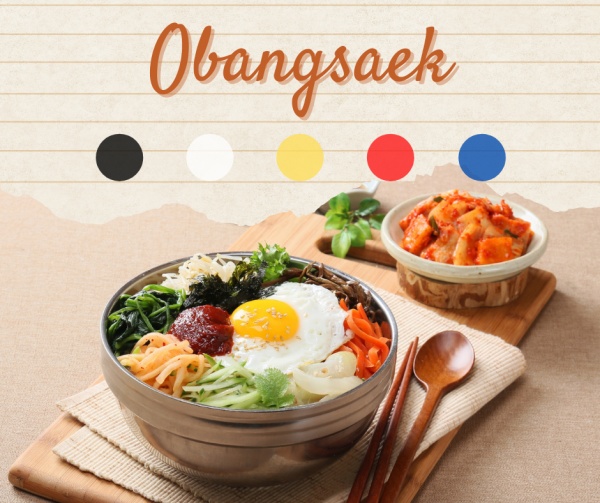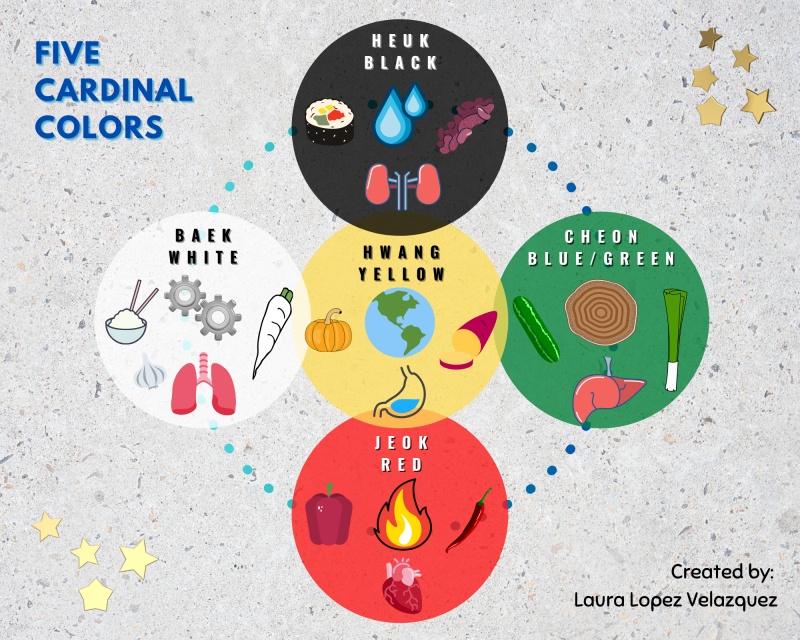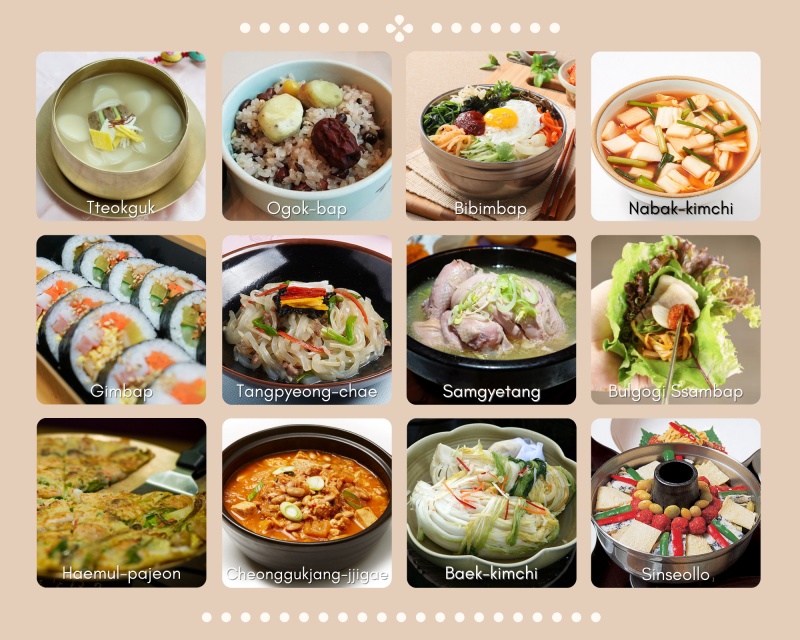- 한국어
- English
- 日本語
- 中文
- العربية
- Español
- Français
- Deutsch
- Pусский
- Tiếng Việt
- Indonesian
By Honorary Reporter Laura Lopez Velazquez from Mexico
Photo = Laura Lopez Velazquez

The concept of harmony and balance is an integral part of Korean culture. Evidence of this is seen in obangsaek, the traditional Korean palette of the colors white, black, green/blue, red and yellow. These colors are present in everyday life in Korea through traditional music, food, dance, clothing and traditional architecture.
Obangsaek is also prominent in Korean food, so by cooking in balance with these five colors, one is believed to obtain and absorb the energy of the universe through each meal. Each of the five colors is related to diverse elements that compose the universe, as well as to cardinal directions and philosophical meanings.

The five colors of obangsaek are each considered to have unique relationships with the elements, food and the human body (Laura Lopez Velazquez)
White (baek) symbolizes metal, west and autumn and represents purity and justice. White foods are thought to be related to lung function and those commonly consumed in Korea are white rice, onions, garlic, potatoes and lotus root. Likewise, consuming white radish, bellflower root and bean sprouts is considered good for preventing the cold.
Black (heuk) symbolizes water, north, wisdom and winter. Black foods are thought to protect the kidney and bladder and include black rice, black beans and black sesame, as well as manna lichen, wood-ear and oak mushroom, and seaweed.
Green/blue (cheong) represents wood, east, youth and spring. Green is sometimes considered another shade of blue, so both colors are expressed with the same word: pureun (green or blue). Green vegetables like cucumber, zucchini, green onions and wild sesame leaves are thought to strengthen the liver and intestines.
Red (jeok) means fire and south and represents summer, boosted energy and protection against evil. Koreans in the past hung for luck strips of dried red pepper around clay jars containing sauce. In today's Korea, some continue the tradition of eating red bean porridge on Dongji (the winter solstice) for protection or luck. In traditional Korean medicine, red is associated with the heart, so red-colored foods such as red pepper are considered beneficial for improving blood circulation.
Yellow (hwang) represents Earth and the center of the five cardinal directions. In ancient Korea, the emperor's royal robes were yellow to symbolize nobility, authority and trustworthiness. In addition, yellow-colored foods are believed to affect appetite through the functions of the stomach and spleen. Such foods include squash, sweet potatoes and soybeans.
Many Korean dishes that represent the beauty and harmony of obangsaek are still consumed today, including those shown in the photo below.

These 12 Korean foods are considered to represent the essence of obangsaek. (Laura Lopez Velazquez)
enny0611@korea.kr
*This article is written by a Korea.net Honorary Reporter. Our group of Honorary Reporters are from all around the world, and they share with Korea.net their love and passion for all things Korean.